LouiS AmericAn
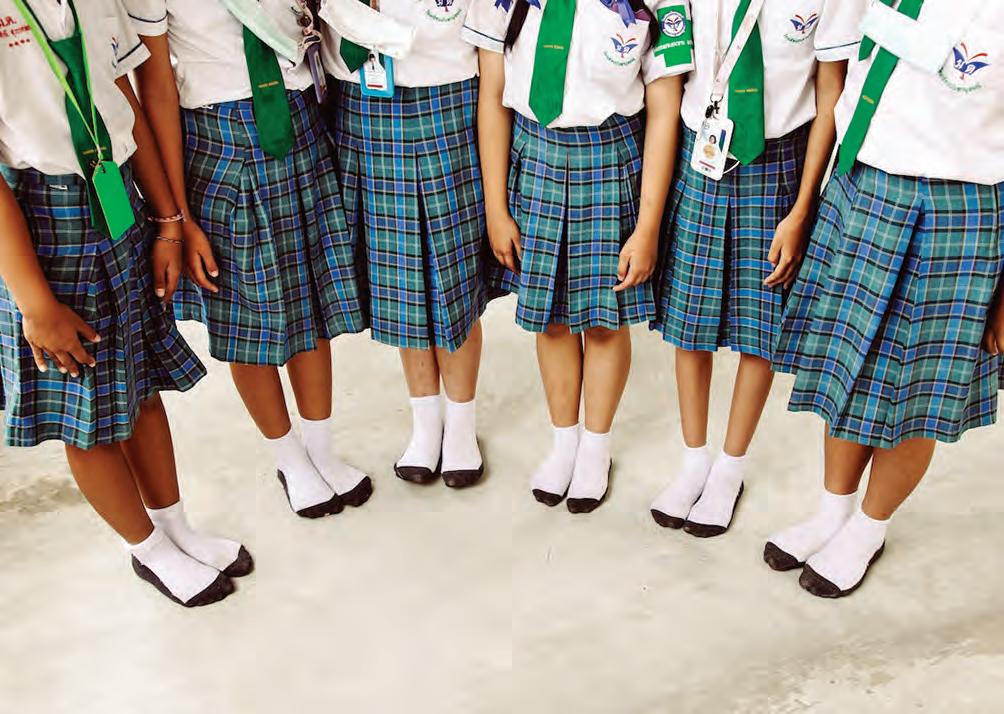


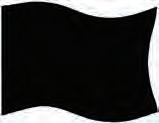
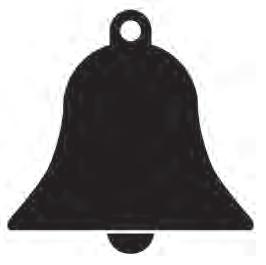
For many Black families in St. Louis, the decision between public and private K–12 education is rarely simple. It sits at the intersection of quality, cost and the search for an affirming environment.
While the region offers several high-performing public schools, a growing number of families are turning to private and independent institutions for smaller class sizes, personalized instruction, and broader academic opportunities.
Private schools range from faith-based high schools to progressive elementary programs, with tuition and missions that vary widely. Cost, transportation and questions about diversity and cultural responsiveness can be real barriers — especially for Black families weighing whether the value justifies the price.
Several private schools in the area stand out for enrolling large numbers of African American students, creating communities where Black students feel represented and seen. Cardinal Ritter College Prep reports a minority population of 100%, Crossroads College Preparatory School lists

94% and Lutheran High School North reports
72%. In these environments, Black students are not exceptions — they are integral to the culture.
That sense of belonging matters. St. Louis entrepreneur Angelica Harris, founder of Top Tutors for Us, told St. Louis Public Radio that shared identity in the classroom can make a measurable difference.
“A growing and significant body of research suggests that students benefit from having a teacher of the same race or ethnicity,” she said during a January interview with Elaine Cha.
Private and independent schools often promote four advantages that appeal to families seeking a tailored experience:
• Academic Excellence: Many offer rigorous, college-preparatory programs and smaller classes designed to maximize individual potential. Schools like Whitfield and St. Louis University High (SLUH) consistently post strong college acceptance rates.
• Uncommon Opportunities: The College School, for instance, emphasizes experiential learning, while St. John Vianney provides robust extracurricular and leadership programs.
• World-Class Faculty: Independent schools often give teachers more flexibility and resources. Some in the St. Louis area report student–teacher ratios as low as 6:1.
• Diverse Communities: Early-learning insti-

By StatePoint
College rankings headlines are often dominated by the same names: Ivy Leagues, elite research universities and schools that admit only a fraction of applicants. But that leaves out most students, say experts.
“The average GPA across all U.S. high schools is 3.0, according to the College Board. For these everyday students, and for families earning an average income between $50,000-$150,000 – the journey to higher education should be about finding a college they can both attend and afford with confidence,” says William Staib, co-founder and pres-
ident of College Raptor, Citizens college planning platform.
That’s why this year, College Raptor is reframing the conversation with its 2026 list of the 25 Most Affordable Great Colleges for “B” Students. Prioritizing possibility over prestige, the list highlights institutions that provide both quality and affordability for the students and families who represent the national average, giving a real, unbiased look at the accessible pathways to higher education often left out of traditional rankings.
To draw up the list, Raptor leveraged insights from hundreds of colleges, millions of machine
Every institution on the list is considered a match or safety for “B” students, with an average acceptance rate of 74%.
learning models and other publicly available data to evaluate academics, student success, faculty quality, campus resources and financial health.
Every institution on the list is considered a match or safety for “B” students, with an average


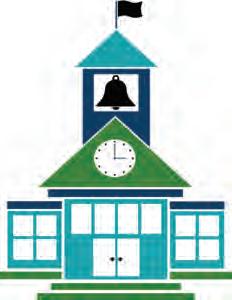
acceptance rate of 74%.
Graduates of these institutions with B academics and $50,000-150,000 financial profiles would pay on average less than 9% of their income towards student debt. That’s more than 20% less than other four-year colleges that are most likely to accept “B” students.
Plus, each school ranks in the top half of accredited four-year institutions nationwide, demonstrating that affordability doesn’t mean sacrificing excellence.
To truly assess the value a school provides, parents and college-bound students should not only think about the next four years ahead, but well into the future. They can use the list to calculate their return on investment, as schools are ranked by loan payment as a percentage of typical starting salary, tying affordability directly to earning potential. This metric represents the estimated percentage of a student’s expected starting monthly income that would be required to repay their projected
student loans within 10 years. It communicates the proportion of monthly income taken up by loan repayment.
This resource can be accessed online by visiting collegeraptor.com. There you can also find lists for the 2026 Overall Best Colleges, Top Division II Schools, Top Division III Schools and Best HBCUs.
“For students with a solid ‘B’ grade average and families in middle-income brackets, expanding the definition of ‘dream school’ to include attainable options that align with family income, grades and additional factors can help more students arrive at college with confidence,” says Staib.
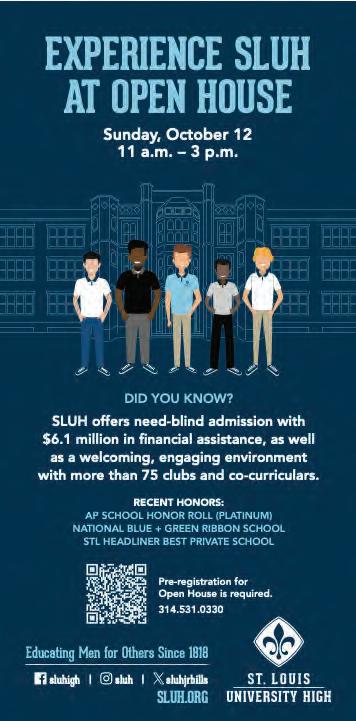
Compiled by Niche
TThe following K-12 schools are ranked the most
diverse in the St. Louis area by Niche, which compiles schools data from across the country and drafts reviews to help families evaluate schools.
Niche says its diversity rankings draw on U.S. Department of Education data and student and parent feedback on ethnic, economic and cultural diversity. (PK refers to Pre-Kindergarten.)
1. Governor French Academy Belleville, Illinois PK, K-12, 110 students
Student/teacher ratio: 8:1
Overall Niche Grade: A+ Diversity Grade: A
2. Tower Grove Christian School
St. Louis, Missouri K-12, 112 students
Student/teacher ratio: 5:1
Overall Niche Grade: ADiversity Grade: A
Christian Academ3. y of Greater St. Louis
St. Louis, Missouri PK, K-12, 132 students
Student/teacher ratio: 8:1
Overall Niche Grade: B+
Diversity Grade: A
4. MICDS (Mary Institute and Saint Louis Country Day School)
St. Louis, Missouri PK, K-12, 1,236 students

Student/teacher ratio: 8:1
Overall Niche Grade: A+ Diversity Grade: A
5. Principia School St. Louis, Missouri
PK, K-12, 510 students
Student/teacher ratio: 6:1
Overall Niche Grade: A+
Diversity Grade: A
6. New Life Christian School
Bridgeton, Missouri
PK, K-12, 207 students
Student/teacher ratio: 12:1
Overall Niche Grade: B
Diversity Grade: A
7. Gateway Legacy

Christian Academy Glen Cardon, Illinois PK, K-12, 230 students
Student/teacher ratio: 18:1
Overall Niche Grade: B
Diversity Grade: A
8. The Fulton School Chesterfield, Missouri PK, K-12, 110 students
Student/teacher ratio: 6:1
Overall Niche Grade: A+
Diversity Grade: A-
9. North County Christian School Florissant, Missouri PK, K-12, 253 students
Student/teacher ratio: 8:1
Overall Niche Grade: B-
Diversity Grade: B+
10. Mississippi Valley Christian School Alton, Illinois PK, K-12, 90 students
Student/teacher ratio: 8:1
Governor French Academy in Belleville, Illinois is the most diverse K-12 private school in the St. Louis area according to Niche.
Overall Niche Grade: A-
Diversity Grade: B
11. Providence Academy St. Louis, Missouri PK, K-12, 158 students
Student/teacher ratio: 8:1
Overall Niche Grade: A
Diversity Grade: B
12. Veritas Christian Academy O’Fallon, Missouri PK, K-12, 664 students
Student/teacher ratio: 14:1
Overall Niche Grade: B-
Diversity Grade: B

By Matthew Stewart Principal, SLUH
In the fall of 1927, a devastating F3 tornado tore through St. Louis, cutting a path of destruction from Webster Groves to downtown. This terrible storm claimed nearly 80 lives and caused more than $50 million in damage.

St. Louis University High (SLUH) took a direct hit, which caused significant damage to our building, particularly to our main chapel. To this day, when you walk through our Chapel of the Beloved Disciple, you can still see scars from that destructive storm.
This past May, nearly a century later, another tornado struck our city. Though damage to our campus was modest, the storm deeply affected many students, families, and staff. Just hours after it passed, our senior prom still went forward in the Central West End. One student arrived late, explaining that his family had just lost much of their home. In the weeks that followed, we learned of other families — students, faculty, and staff — whose lives had been upended by the loss of homes, belongings, and stability.
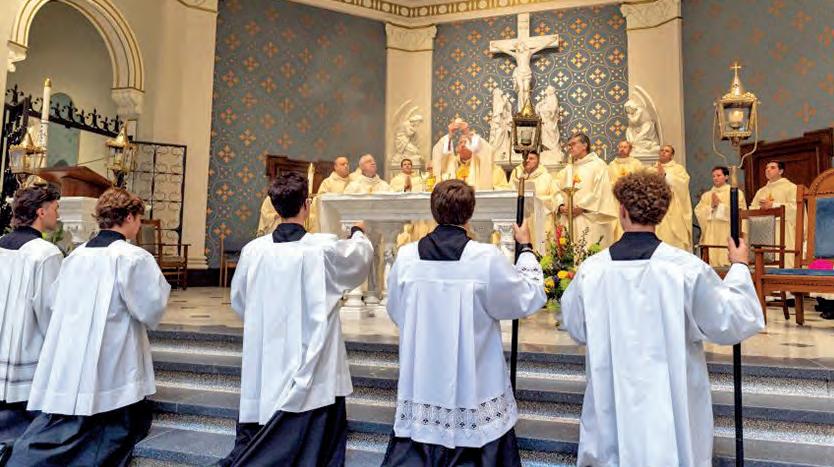
As principal of SLUH, I have been privileged to hear these stories firsthand. I have been deeply moved by the resilience, courage, and faith of those communities most affected. I am struck by the outpouring of support shown by so many across our city. But as you know better than I, recovery and rebuilding are far from over. Long after the headlines fade and the benefit concerts end, families are still waiting for the resources they need.
We are not only a school in the city, but also a community rooted in faith and solidarity.
Moments like these remind us why anchor institutions like SLUH exist. We are not only a school in the city, but also a community rooted in faith and solidarity, called


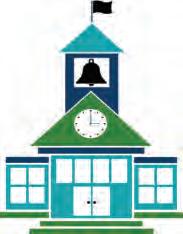
to walk with those who suffer and to accompany families in times of trial. Just as our city continues the hard work of rebuilding, we at SLUH continue the daily work of forming young men, each of whom brings his own interior strains and struggles. We offer these young men education, but even more we offer hope, healing and empowerment for service to our city and the world. SLUH is a special place whose mission has always been to form young men of competence, conscience, and compassion. Years ago, while other schools were closing or choosing to leave the city of St. Louis, SLUH dou-
bled down on its commitment to remain in the city “for good.”
We know that choosing a high school is one of the most important — and personal — decisions a family can make for a middle school aged son, and we know that SLUH is not right for everyone. Whether a family is rebuilding from a tornado, a change of employment, or strain of any kind, students who love learning will be well loved and supported at SLUH, especially in times of trial. It is a privilege and a deliberate choice that SLUH has cast our lot with the city of St. Louis. In fact, there is no clearer way to share this commitment or our hope that SLUH will become more broadly the school of choice for families of color in our region than the exact words of our mission statement:
We are a Catholic, Jesuit college-preparatory high school for young men, committed to our presence
in the city of St. Louis and dedicated to building Christ’s kingdom of truth, justice, love and peace. We serve young men based on their ability to succeed, rather than their economic circumstances. If you have never heard of SLUH or never considered it as a place for your family to call home for the four years of high school, I encourage you to learn more about our school and the ways that we can work together. We are proud to conduct need-blind admissions and to meet 100% of families’ financial needs, including wrap-around services for students facing extraordinary circumstances and greater needs. We are here to form the young men in your family and community, and we are here to partner with all people of good will for a hope-filled future for our city, the greater St. Louis region, and our world with such tremendous needs for the greater glory of God.
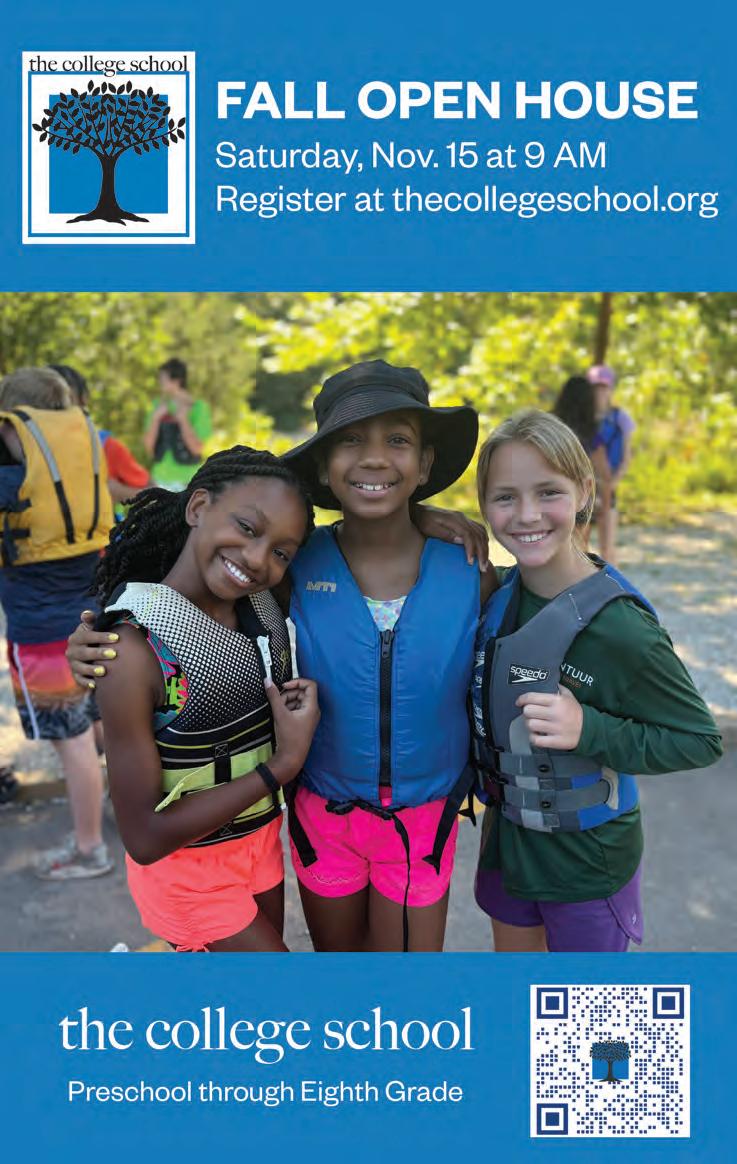
By Chantrice Tallie, Personal Banker, Commerce Bank
Teaching kids about money can feel overwhelming, especially when you’re not sure where to begin or how to make lessons feel natural instead of like a lecture. As a personal banker, I often hear from busy families who want practical, lowstress ways to help their children grow confident with money. Here are my four favorite approaches that make teaching money skills easier for parents and more fun for kids.
1. Try the 3-jar method.
For younger children ages 5–8, I like to suggest creating a simple system they can see and understand. You can set up three clear jars labeled “spend,” “save,” and “share.” Each time they receive money, whether it’s birthday cash or coins they find around the house, you can help them divide it up.
• Jar 1 – 50% for spending
Setting aside half ensures that your child has an opportunity to make spending choices and learn from them.
• Jar 2 – 30% for saving
Earmarking a percentage for the future helps
Continued from B7

your child learn patience and the value of waiting for a potentially bigger reward.
• Jar 3 – 20% for sharing with others
Encouraging your child to give to charities they care about lets them see how their money can help others.
This 50–30–20 split balances spending for now, saving for later, and sharing with others while building healthy money habits that contribute to lifelong financial stability. Plus, physically moving coins between jars helps kids remember these ideas better than just talking about them.
Several private schools in the area stand out for enrolling large numbers of African American students.
tutions such as New City School and Wilson School intentionally recruit diverse student bodies, recognizing that exposure to difference enhances academic and social tages of private education decades, white flight from

2. Turn shopping trips into real money lessons.
A simple shopping trip can teach preteens real money skills. Give them $20 to pick out ingredients for dinner. This hands-on activity teaches them to compare prices, prioritize needs, and make spending decisions while keeping a budget in mind. If they
A simple shopping trip can teach preteens real money skills. Give them $20 to pick out ingredients for dinner. This handson activity teaches them to compare prices, prioritize needs, and make spending decisions while keeping a budget in mind.
spend too much, you can talk to them about the importance of staying within preset limits.
3. Help them connect work with earning.
Linking effort to earnings helps children understand the value of money and promotes responsible spending. Rather than au-
tomatically giving allowances, offer age-appropriate ways to earn money by serving others. This might include $5 for washing the car or $3 for organizing a closet. For teenagers, a part-time job can deepen their understanding of money. Earning their own cash often makes them more thoughtful spenders.
4. Use small mistakes as learning opportunities.
Allow children to make minor money mistakes while consequences are small. If your 8-year-old spends their entire allowance quickly, stepping back lets the lesson unfold naturally. Later, you can discuss what happened and brainstorm how they could approach it differently next time. Learning from a small disappointment builds resilience and confidence for bigger financial decisions as they grow.
Teaching kids about money doesn’t have to complicated or stressful. By using simple, everyday moments to introduce financial concepts, families can build a solid foundation that will benefit children for years to come. And remember, you don’t have to do it alone — Commerce Bank is here to support your family’s financial journey every step of the way.
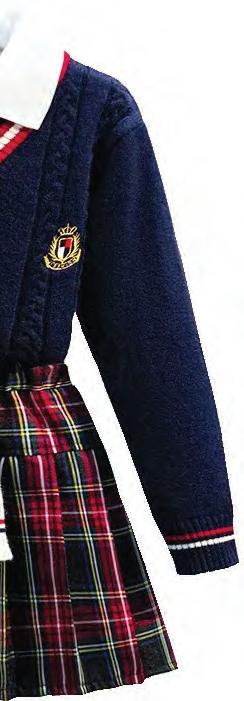
ty translates into belonging and whether inclusion is lived, not just stated.
divides in local education.
— or to ensure that sions brochures. vate education, underscores evaluating a school’s curriculum — asking whethdiversi-
For many families, the most significant hurdle is the price of admission, with 2025-2026 tuition rates representing a substantial financial investment. St. Louis private school tuition rates for the 2025-2026 school year represent a substantial financial investment. On the high end, the cost can approach or surpass $40,000, but several are in the $15,000-$25,000 range.
But a high sticker price does not mean the door is closed. Most private schools, including Forsyth School and others, offer substantial need-based tuition assistance and scholarships. For instance, MICDS (Mary Institute and St. Louis Country Day School) reported granting over $6.73 million in tuition assistance in the 20242025 academic year, making its education accessible to a wide range of income levels.
Cardinal Ritter College Prep, a historically Black Catholic high school in the city, lists tuition at $10,300 for the 20252026 school year and says that more than 85% of its scholars receive some form of financial assistance.
As Black families continue to weigh their options, private schools in St. Louis have an opportunity — and a responsibility — to create environments where excellence and equity coexist. When those goals align, students don’t just attend — they thrive.
In addition to staff of The St. Louis American, generative artificial intelligence assisted in producing this story.

By StatePoint
As a new school year gets underway, it’s time to zero in on the tech products that can help your students ease into their academic routines and succeed in the classroom. Here are some of the greatest products on store shelves today that can transform a student’s relationship to school subjects ranging from STEM and language arts to music and physical education:
Math made magical: Put the best tools in the hands of your math wizard with the fx-991CW ClassWiz, the latest enhancement to Casio’s scientific calculators. With an all-new quadruple-graded LCD display, your student will be able to easily find their cursor while writing and modifying expressions.
All of the calculator’s functions can be accessed through a convenient Math Catalog, which also hosts 47 scientific constants and 40 measurement conversions. By partnering the ClassWiz with an internet-capable mobile device and scanning a QR code on the calculator’s screen, solutions can be graphed and visualized through the Casio-hosted virtual workspace, ClassPad.net.
Note-taking made simple: When it comes to synthesizing information, there really is no replacement for writing things down by hand. Now, there’s a simple way to take notes the “old-fash-

ioned way” while getting all the benefits of digitization. With a smart pen, your student’s handwritten notes are compatible with all their devices. These notes are also editable, searchable and highlightable, taking the fuss out of studying for exams and organizing materials for essays.
Music made beautiful: Bring life and light to your young music student’s
With a smart pen, your student’s handwritten notes are compatible with all their devices.
world with the CT-S1. The sleek minimalist design and uplifting sound of this Casio keyboard will allow them to focus solely on


the music, develop their unique style, and energize and encourage them to play more.
With a simple inter-
face, and a color palette to suit every aesthetic, the functionality and design of the CT-S1 is all about the individual musician, and its compact design and portability are well-suited for on-the-go students short on space.
Sports made supportive: Student-athletes can hone their skills in their sport of choice with new technology. From smart footballs that track
spiral velocity and throw distance to connected soccer balls that measure trajectory, speed and spin, today’s tech tools on the field function like a coach available to offer detailed, accurate feedback 24/7.
This school year, you can encourage your student to thrive. With the latest and greatest technology, they can be inspired and supported to meet their potential.

For the St. Louis American
For many Black families, choosing a private K-12 school is a major financial investment made for perceived academic and safety benefits. But for students themselves, navigating the independent school world — and the public one they left behind or occasionally encounter — often means crossing an invisible barrier of social status and wealth.
The idea of the “glamorous private school life,” reinforced in popular culture through images of blazers, tuition checks and manicured campuses, shapes how both private school students view themselves and how their public school peers view them. While private schools historically attract students from more affluent homes, research suggests that it’s wealth — not the schooling itself — that provides most of the perceived advantage.
The myth of academic superiority
Educational research challenges the assumption that private schools consistently outperform public schools. When test scores are adjusted for family income and parents’ education levels, the gap between public and private school students narrows — and sometimes disappears altogether.
Education professors Sarah and Christopher Lubienski, in a national study of math achievement, found that public school students from similar socioeconom-
ic backgrounds often scored higher than their peers in private schools. Their findings suggested that family background, not superior teaching, accounted for much of the difference.
Other experts echo that view, noting that family resources often play a greater role than school type.
The hidden tax on self-perception
If academic advantage is largely a myth, social comparison is not.
For students of color in predominantly white and affluent private schools, this often translates to a heightened awareness of difference — economic, cultural and social. Meanwhile, students from public schools can sometimes view their private school peers as “sheltered” or out of touch.
One former student who attended both types of schools recalled a classmate once thinking “ISIS was a country,” a comment that circulated widely online and underscored the perception that some private school students live in a bubble.
Research on student well-being complicates the idea that smaller, tightly knit private schools automatically provide a healthier environment. A 2005 study published by the American Sociological Association found that, after controlling for students’ backgrounds, private school attendance was associated with slightly higher odds of threats or use of weapons

among both male and female students. The finding suggested that smaller, more homogeneous settings do not necessarily lead to better emotional adjustment.
Advice for transferred students Students who transfer from public to private schools often face a cultural and academic shock.

The differences in resources, class size and school culture can feel like entering a new world. Counselors who work with transitioning students offer a few consistent pieces of advice:
• Be ready for an academic shift. Private schools often expect students to go beyond minimum requirements, emphasizing writing, anal-
ysis and hands-on learning. Finding an organizational system early is key.
• Engage with teachers. Smaller class sizes mean there’s no disappearing into the crowd. Teachers expect participation, questions and communication.
• Understand the social orbit. Many private schools expect strong
parental involvement and value alignment. Families often find themselves adapting to a new set of expectations that extend beyond the classroom.
• Stay connected to your roots. Maintaining ties to friends, faith communities and neighborhoods can keep students grounded and confident in their identity.
There’s little evidence that private-school students, as a group, believe they’re “above” public-school students. What research does show is that status exists in every school, and limited contact across class and racial lines allows myths to thrive.
For Black families, deeper questions remain: Where will my child belong? Who will see them, support them and help them thrive? Whether in a private or public classroom, belonging often matters more than branding. Ultimately, the public-versus-private debate reflects a broader struggle over resources and opportunity. Private schools can offer smaller classes and specialized programs, but a child’s sense of selfworth depends less on a school’s crest and more on community, preparation and the ability to navigate the unspoken social hierarchies that come with privilege.
In addition to staff of The St. Louis American, generative artificial intelligence assisted in producing this story.
